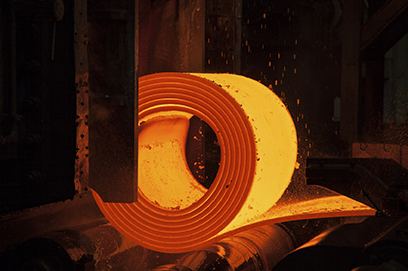Fluid Power World Contributing Editor Josh Cosford gave a webinar presentation on Proper Hose Assembly Guidelines. The transcript has been divided into an 8-part blog post series. The following excerpt from that webinar transcript is the third part of the series.
The second part of STAMPED is temperature. Temperature is an important consideration. Every application is different, but you need to consider the temperature of the fluid. There’s kind of a limited range on what hydraulic fluid likes to operate in, just like the motor oil in our car. Ideally, it’d stay between 90 to 120° F depending on the viscosity in the application. But in general, you want the internals so that the fluid passing through it likes to be at a particular point, but also consider what ambient temperature is. This is more critical for hydraulic hose applications because you’re not dealing with steam, you’re not dealing with refridgerenders. This is really just limited in what you’re moving through a hydraulic hose and that’s hydraulic fluid.
 Hydraulic fluid has a range of usability: Too cold and it’s too viscous, it’s too thick to pump, not so good, too hot and it loses lubricity. It has more friction wear inside your components and oxidation. You want to keep it in a limited range and most hoses are good for that, but the outside temperature is also critical.
Hydraulic fluid has a range of usability: Too cold and it’s too viscous, it’s too thick to pump, not so good, too hot and it loses lubricity. It has more friction wear inside your components and oxidation. You want to keep it in a limited range and most hoses are good for that, but the outside temperature is also critical.
Typical hydraulic hose is good for -40 up to 212° F (-40 to 100° C), and that will cover the gambit of 99% of the applications you’ll see: general machinery or industrial machinery or in things like that. If you want to get a little more extreme, if you’re on a steel mill and at a place where there’s high ambient heat conditions once again, if you have hydraulic fluid that’s up to 300° F, that is cooked; it’s pretty much going to vaporize. It’s not good for hydraulic fluid; it’s not good for your machinery. But the carcass, which is typically neoprene, might have to be a different material to handle that 300° of ambient temperature.
 If you have low temperature extremes, once again, low temperature application might be -58 up to 212° F, if you have hydraulic fluid that’s -58°, it’s probably not moving very well, probably not pumping very well. It’s really just the ambient cold condition. If you have any arctic machinery, you might have snow grooming machinery, stuff like that that have hydraulics on it, you want to make sure that the outer carcass, the outer layer of the hose, is constructed with material that can stay pliable and flexible in cool temperatures so it doesn’t crack as easily, doesn’t go through heating and cold cycles that cause it to fail prematurely. When it comes to the temperature application of the hose, mostly it’s the ambient considerations.
If you have low temperature extremes, once again, low temperature application might be -58 up to 212° F, if you have hydraulic fluid that’s -58°, it’s probably not moving very well, probably not pumping very well. It’s really just the ambient cold condition. If you have any arctic machinery, you might have snow grooming machinery, stuff like that that have hydraulics on it, you want to make sure that the outer carcass, the outer layer of the hose, is constructed with material that can stay pliable and flexible in cool temperatures so it doesn’t crack as easily, doesn’t go through heating and cold cycles that cause it to fail prematurely. When it comes to the temperature application of the hose, mostly it’s the ambient considerations.
The post Proper Hose Assembly Guidelines, Part 3 – Effects of Temperature appeared first on Hose Assembly Tips.
Filed Under: Hose & Tubing, Hose Assembly Tips